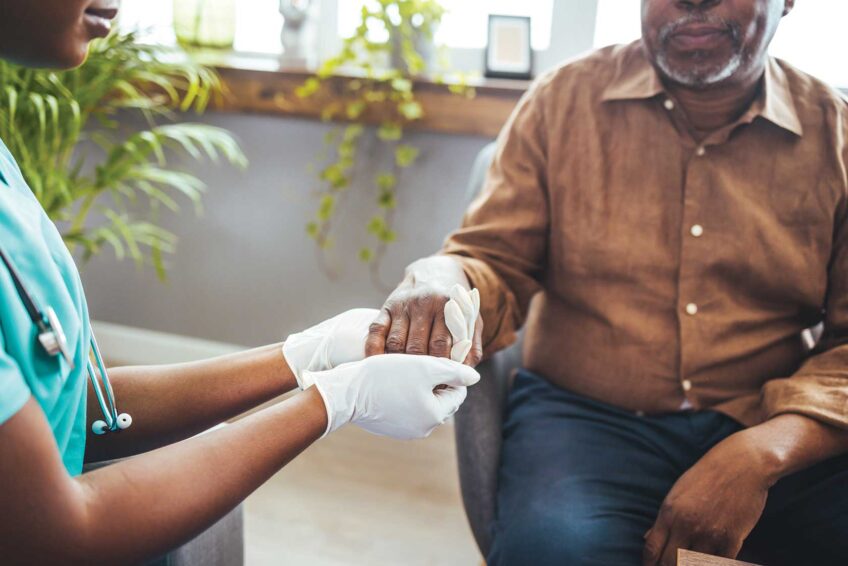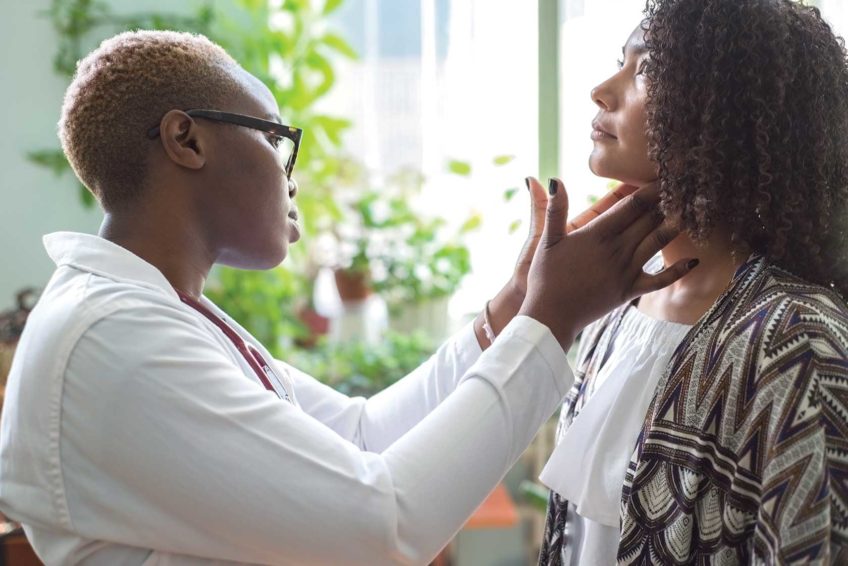
There is a common misperception that if cancer does not run in your family, you are relatively safe from the disease. Not so.
Only 5 to 10 percent of cancers are familial, or hereditary, according to the National Cancer Institute (NCI). That leaves roughly 90 percent unaccounted for.
It may be surprising to learn that a large proportion of that 90 percent stems from actions or habits you do or don’t do. The American Cancer Society (ACS) asserts that more than 40 percent of the cases of cancer are of our own doing.
Several factors increase the risk of cancer. Some are out of your control. The incidence increases with age. Roughly 52 percent of the cases occur between the ages of 55 and 74. Cancer under the age of 34 is relatively uncommon in comparison. The environment is another factor outside of your reach. You can’t control the air you breathe, nor idling buses or burning fossil fuels. Nor can you influence race or gender. Case in point — black males for reasons unknown suffer the highest incidence of prostate cancer.
But there are several factors under your control. The problem is that not many people are aware of them. Every two years the American Institute for Cancer Research (AICR) publishes its Cancer Risk Awareness Survey, and the results tell the tale. While 93 percent of respondents are aware that tobacco increases cancer risk, fewer than 40 percent attributed cancer to alcohol, processed and red meats, diet and inactivity. Instead, people cling to beliefs that stress, hormones in beef and genetically modified foods are the major culprits behind cancer.
Tobacco
By far the most significant controllable factor is tobacco. Smoking is the leading cause of preventable deaths, according to the Centers for Disease Control and Prevention, and accounts for roughly 1,300 deaths every day in this country. It’s not only smokers that pay the penalty. More than 41,000 deaths per year result from secondhand smoke exposure.

Christopher Lathan, M.D., M.S., M.P.H., Faculty Director for Cancer Care Equity Dana-Farber Cancer Institute. PHOTO: DANA-FARBER CANCER INSTITUTE
It’s well known that smoking is related to cancers of the lung, mouth and throat, but actually, tobacco harms nearly every organ in the body. “This is one of the most potent ways of delivering a toxic substance,” explained Dr. Christopher Lathan, who specializes in lung cancer at Dana-Farber Cancer Institute.
The damage inflicted by tobacco is not surprising. Tobacco smoke contains 250 harmful chemicals, at least 69 of which can cause cancer, according to the NCI. Some smokers switch to what they consider “safer” forms of tobacco use, such as cigars, pipes and smokeless tobacco, but these modifications do not provide protection. Any tobacco use is linked with cancer. It merely changes the type.
Why then would a person subject his or her body to such dangerous chemicals? It’s all about the nicotine. Smoking is addictive, and nicotine is one of the hardest drugs to overcome, and ranks up there with heroin and cocaine. Young people are turning to E-cigarettes in search of a safer alternative, but they are also addictive.
Some people attempt to minimize the habit by smoking only once a day, but according to the NCI, even one cigarette per day can cause smoking-related cancers. “The single best thing you can do is stop smoking,” said Lathan. “Over time the risk decreases, but it never goes quite to zero.”
Quitting is not easy. It may take 10 or more attempts, so try … then try again.
DON’T GO IT ALONE
Several programs are available to offer assistance and advice on quitting smoking:
Smokers’ Helpline: 1-800-QUIT-NOW (1-800-784-8669)
National Cancer Institute’s Smoking Quitline: 1-877-448-7848
American Cancer Society’s Quit for Life: 1-800-227-2345
Smokefree.gov
Obesity
Obesity is the second most significant risk factor of cancer, according to the AICR, and accounts for roughly 7 percent of all cancer deaths. That is particularly alarming since the prevalence of obesity in this country is now roughly 40 percent and is more common in blacks and Hispanics.
Fat is typically viewed as merely unwanted or unsightly additional poundage, but actually, it is linked to 13 different cancers. That’s largely because fat produces estrogen, which when in excess, can increase the risk of uterine, breast and ovarian cancers, especially in post-menopausal women.
Chronic low-level inflammation may be another factor. For instance, chronic inflammation of the gallstones, which is common in obese people, can eventually cause damage to DNA and result in gallbladder cancer.
Alcohol
It’s a common practice to kick back with a beer after work or have a glass of wine with dinner. But how many do you have? The National Institute on Alcohol Abuse and Alcoholism has the answer: one drink a day for women, two for men. What constitutes a drink? The NIAAA has an answer for that as well: 12 ounces of beer; 5 ounces of wine; and 1.5 ounces, or a shot of 80-proof liquor, such as scotch.
Yet, a stein of beer can hold 44 ounces, and a wine glass 22 ounces. So that glass of wine or chug of beer turns into four servings. Excessive alcohol, especially when combined with smoking, is linked predominantly to cancers of the head and neck and esophagus, but can impact the liver, breast and colon as well.
Alcohol can act as an irritant and cause damage to the cell’s DNA that can result in cancer. Keep in mind that it’s the amount of alcohol — not the type of alcoholic beverage — that increases risk.
Diet and inactivity
Roughly 5 percent of preventable causes of cancer are attributed to lack of exercise and poor diet, according to the ACS. The new mantra is move more … sit less. Thirty minutes a day of moderate-intensity physical activity, such as walking, will suffice. Combine that with a healthy eating plan of fruits, veggies, whole grains, legumes and nuts. Nutritionists advise limiting consumption of red meat to only 12 ounces a week, and processed meats, such as bacon and ham, should be consumed rarely, if at all. Both red and processed meats are linked to colon cancer.
Other factors
Infectious disease: Human papillomavirus, or HPV, is the most common sexually transmitted virus. The immune system is able to eradicate it in most cases, but if HPV persists, it can result in cancer of the cervix, vagina, penis, throat and anus. The good news is that a vaccination delivered in two or three doses has been developed to prevent most infections. The Food and Drug Administration recently approved Gardasil 9 for females and males between the ages of nine and 45.
Skin cancer: Although skin cancer is not common among people of color, research has shown that survival rates of melanoma, the more deadly type of skin cancer, are lower in blacks. All people regardless of skin tone should take precautions from UV rays and use sunscreen, avoid the sun when it is at its strongest and wear protective clothing and sunglasses when outdoors. Yearly screenings can check for unusual moles or changes in your skin.
Screenings: Screenings can detect cancers in the early stage when treatment is more successful, but tests for cervical and colon cancer can often find pre-cancerous changes in cells before they have the chance to transition into cancer.
A synergistic approach
All these tactics work in synergy to help keep you cancer-free. If you can tackle just one, you are on the right track. Then take it one step at a time. “Prevention decreases risk,” explained Lathan.
AT A GLANCE
Cancers linked to ALCOHOL
- Breast
- Colon and rectum
- Esophagus
- Larynx (Voice box)
- Liver
- Mouth
- Throat
Cancers linked to SMOKING
- Acute myeloid leukemia
- Bladder
- Cervix
- Colon and rectum
- Esophagus
- Kidney
- Larynx (voice box)
- Liver
- Lung
- Oral cavity and throat
- Pancreas
- Stomach
Cancers linked to OBESITY
- Breast (postmenopausal women)
- Colon and rectum
- Uterine
- Esophagus
- Kidney
- Pancreas
- Gallbladder
- Liver
- Non-Hodgkin lymphoma
- Multiple myeloma
- Cervix
- Ovary
- Aggressive forms of prostate cancer








